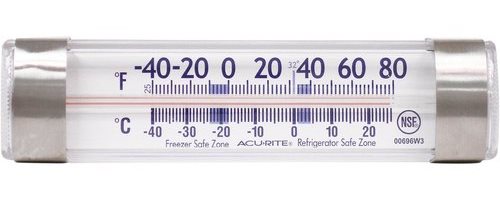
YOU WILL NEED A COOLER:
- If your grocery store is more than 30 minutes away from home
- While transporting food on road trips
- While boating, camping, visiting the beach, or picnicking
- At barbecues and outdoor parties
NECESSARY ITEMS:
- Multiple insulated coolers
- Plenty of ice, frozen gel packs, or pre-frozen water bottles (serve as ice packs AND extra water if you get thirsty!)
- An appliance thermometer
- Re-sealable plastic bags
- Watertight plastic storage containers
HOW TO PACK YOUR COOLER:
- Pack perishable foods directly from the fridge or freezer into the cooler. Items may be packed while still frozen; they will stay colder longer.
- If your cooler isn’t completely filled, pack the remaining space with ice or frozen gel packs. A full cooler will stay colder longer than a partially filled one.
- If possible place all raw meat, poultry, and seafood in a separate cooler. Otherwise, place them in a secure wrapping and watertight plastic storage container at the bottom of the cooler so their juices won’t contaminate other food items.
- Store ALL food in watertight plastic storage containers to prevent contact with melting ice and other foods or liquids.
- Place beverages in a separate cooler since it will be opened and closed multiple times, allowing the cold air to escape. Pre-chill your beverages before placing them in the cooler, and pack them on the bottom before filling the cooler with ice. This is because cold air travels downwards.
COOLER TIPS AND TRICKS
- Limit the amount of times the food cooler is opened, and be sure to open and close the lid quickly and securely.
- Use an appliance temperature to take the guesswork out of knowing whether or not your food is safe to eat. Put one in your cooler, and make sure it reads 40˚F or below.
- Don’t let your food sit out for more than 2 hours, or 1 hour when the outside temperature is 90˚F or above. Put perishables back into the cooler immediately after eating.
- For long road trips, take 2 coolers: 1 for snacks and the day’s immediate food needs, and 1 for perishable foods to be used later in the vacation.
- While driving, keep your cooler on the floor of the passenger side of your vehicle, not in the sauna-like trunk.
- Once outside, keep your cooler under a shaded area like a park bench or tree, partially bury it in the sand, and cover with a light-colored blanket. Don’t ever leave your cooler in direct sunlight or inside of your warm car.
AND REMEMBER:
The number one rule when deciding if your food is safe: When in doubt, throw it out!
For more information, be sure to check out: Foodsafety.gov, Keep Your Cooler, and Plastics Info.
Nicholas Fischetti is a dietetic intern at the Memphis VA Medical Center. He recently received his Masters of Science in Nutrition Science from Syracuse University.
Topics in this story
More Stories
The Social Security Administration is hoping to make applying for Supplemental Security Income (SSI) a whole lot easier, announcing it will start offering online, streamlined applications for some applicants.
Yusuf Henriques, an Army Veteran and former combat medic, is the founder and CEO of IndyGeneUS AI, a genomics company on a mission to improve health equity by increasing representation of women and racial minorities in clinical trials.
Online shopping scams are the riskiest scam for Veterans, with 77.3% of reports confirmed losing money when targeted by this scam.







